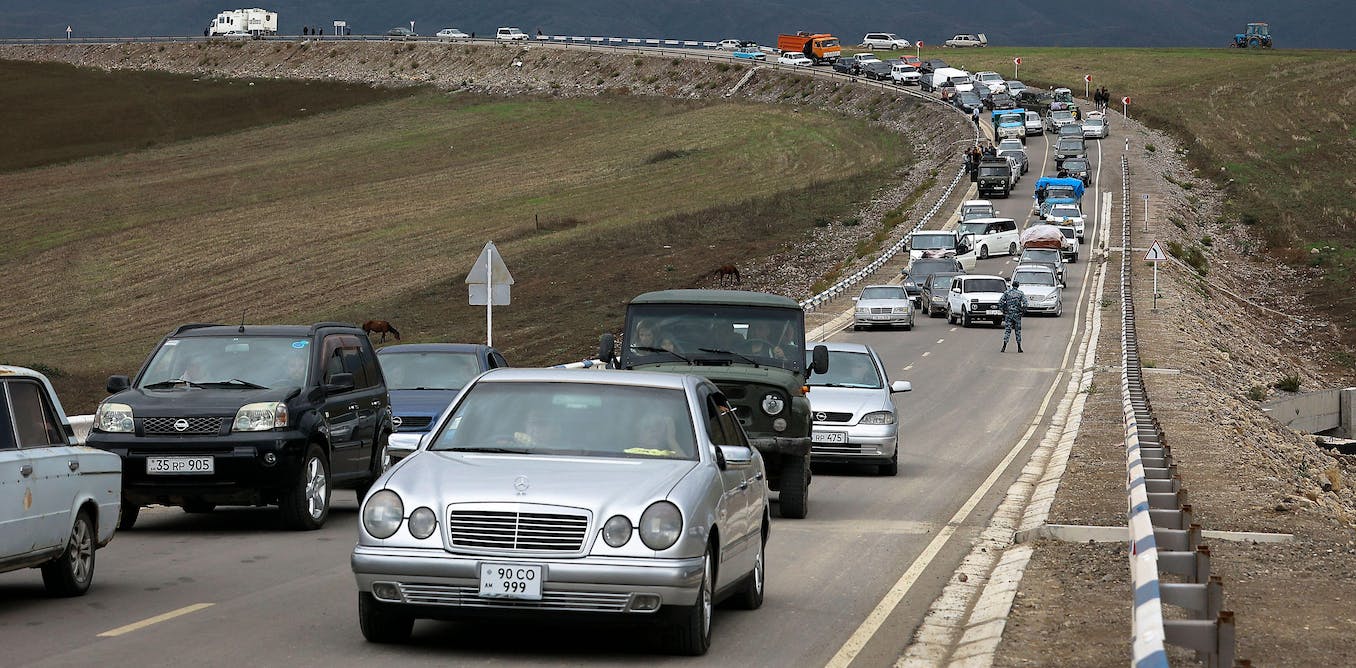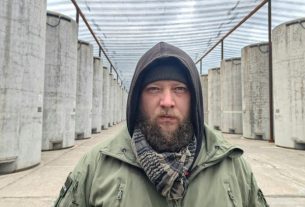In the past few days there has been a steady stream of ethnic Armenians fleeing the contested region of Narogno-Karabakh. Azerbaijan launched a 24-hour assault on the Armenian enclave, which is surrounded by Azerbaijani territory, on September 19 and, following a ceasefire brokered the following day, refugees have been allowed to leave via the narrow Lachin corridor, which connects the enclave with Armenia.
As of September 27, it was estimated that nearly 30,000 people had made the crossing since it was opened on September 24. It is expected that many of the estimated 120,000 Karabakhi Armenians will leave for Armenia. Meanwhile, at least 68 people were killed and about 350 injured in an explosion at a petrol station in the enclave’s main highway out of Stepanakert, its capital.
The Armenian prime minister, Nikol Pashinyan, has accused Azerbaijan of ethnic cleansing in the region – something denied by Azerbaijan which described the conflict as an “anti-terror” operation ans said that the majority Armenian population would be integrated into Azerbaijan and their rights respected.
But it appears that the exodus of dispossessed Armenians will continue and they are an angry population. They are angry at Azerbaijan for the shelling which forced them to flee. They are angry at Turkey for supporting and arming Azerbaijan. Oddly, they are not angry at Russia whose lack of attention emboldened Azerbaijan to take action against them. In fact, some of the refugees from Nagorno-Karabakh are expected to make their way to Russia via Armenia.
Armenian anger
Mainly they are angry at the Armenian government as are many of their compatriots in Armenia itself. But the mass protests have been more an expression of hopelessness than of defiance. Nagorno-Karabakh – where there has been an ethnic Armenian population since 200BCE – is lost and many people blame their leader. Witnessing refugees arrive has upped the emotional ante.
The response from Armenian prime minister, Nikol Pashinyan, has been brutal. Up to 350 protesters were detained and some reportedly badly beaten by security forces. Pashinyan has implied that it is the Kremlin who instigated the riots. But, even if Russian media’s coverage is hostile towards Pashinyan, Armenians themselves have plenty of grievances against their prime minister.
The unrest follows riots in 2020 over the loss of territory and prestige after the second Karabakh war. During the conflict, Azeri forces reoccupied large tracts of territory previously occupied by Armenia.
So Pashinyan was already unpopular even before the most recent Azeri military action – his approval ratings as of June 2023 were very low – only 14% expressed trust in him and 72% gave his performance a negative rating. But there is little cohesion among opposition groups beyond a desire for Pashinyan’s resignation.
A friendship soured
Russian relations with Armenia have been shaky for some time. After the invasion of Ukraine, Moscow pivoted towards Turkey, Azerbaijan’s sponsor, as it deemed the relationship more valuable in terms of mitigating the effects of western sanctions.
To a degree this was a rational calculation, but there’s a personal element as well. Vladimir Putin never warmed to Pashinyan, who gained power in 2018 after popular protests ousted the Kremlin-friendly leadership of Serzh Sargsyan. But Armenia’s close relationship with Russia goes back centuries, so the two leaders managed to get along.
Things began to really sour between Russia and Armenia in 2023, when Armenia, refused to host military exercises by the Collective Security Treaty Organisation (CSTO), instead inviting the US military to train there. The highly symbolic visit by Armenian first lady, Anna Hakobyan, to Ukraine in early September seems to have been the last straw. Armenia, it seems, no longer counted Russia as a friend or a force to be reckoned with.
What happens next
Azerbaijan has not achieved all of its goals yet. It aims to open direct ground links to its enclave embedded in Armenia, the Nakhichevan Autonomous Republic, which has a population of just under 450,000. This would also give mainland Azerbaijan direct access to Turkey rather than transit routed through Iran.
Peter Hermes Furian/Shutterstock
Proposals for the “Zangezur corridor” are bitterly opposed by Armenia as it would effectively block the country’s border with Iran. The issue has rankled since the first Karabakh war in 1991, after which the two populations were only linked by air travel. Part of the agreement that halted the second Karabakh war in 2020 included allowing free transit through Zangezur, but this was never implemented. Now the idea is back on the table, raised by Azeri president Ilham Aliyev at a meeting with Turkish president, Recep Tayyip Erdoğan on September 25, when they met in Nakhichevan.
This will bring Iran into play as the route of any corridor between Azerbaijan and Nakhichevan would go along its border. Some sort of deal addressing Iran’s security concerns will need to be reached – and this is very likely to involve Moscow as one of Tehran’s close allies. So, Moscow appears to have taken a conscious decision to abandon Armenia for closer relations with Azerbaijan and Turkey and the opportunity to act as a power broker with Iran. In Putin’s eyes, no doubt, Pashinyan is disposable. He can wait until a different, more amenable leader, comes to power.
Armenia’s pivot to the west, meanwhile, appears almost inevitable. The country is likely to withdraw from the CSTO and apply to join Nato and request visa-free travel to the EU. But the manner in which Pashinyan is putting down protests will make many potential allies in the west uncomfortable.
The situation is only made more complex by Europe’s dependence on Azerbaijan for gas and its strategically important location in the Middle Corridor Eurasian trade route between China and Europe. The west can still play a valuable role in brokering peace between Armenia and Azerbaijan. But for any lasting settlement to stick, Russia and Turkey will have to be involved, instead of becoming its spoilers. This is a problem with many moving parts.
_Refugee figures have been updated as have the number of casualties from the fuel depot blast.
_
![]()
Anna Matveeva does not work for, consult, own shares in or receive funding from any company or organisation that would benefit from this article, and has disclosed no relevant affiliations beyond their academic appointment.



